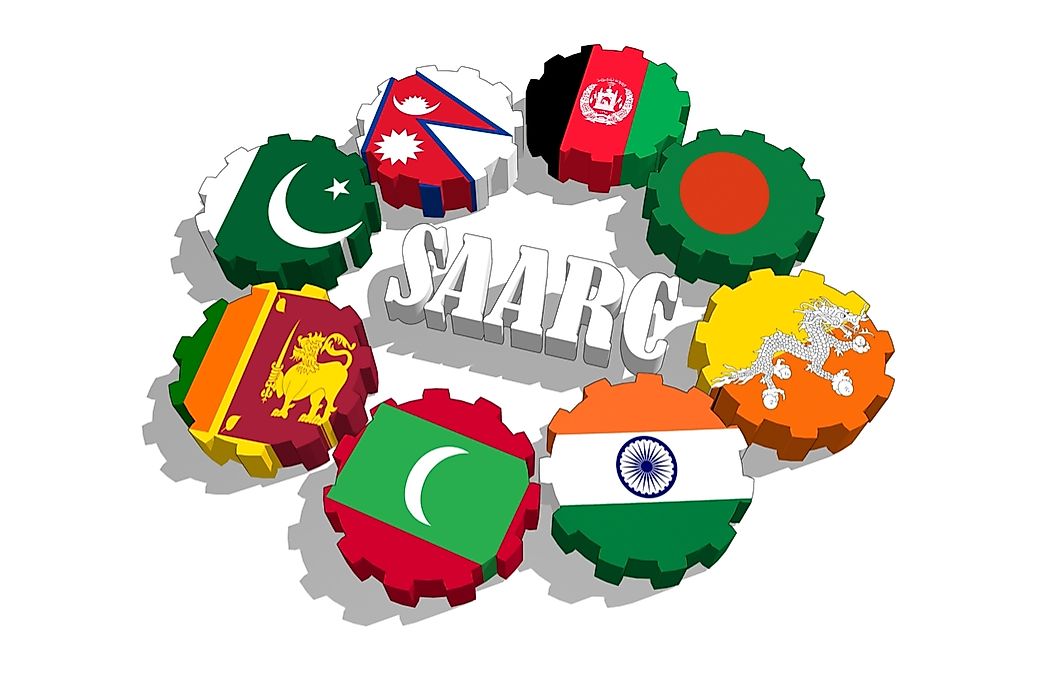Which Countries Are Members Of SAARC?

SAARC stands for South Asian Association for Regional Cooperation, which is a regional organization comprising of eight nations located in South Asia. As of 2015, the regional bloc accounted for 3.8% of the world’s economy. The membership of the regional bloc is comprised of Nepal, Pakistan, India, the Maldives, Sri Lanka, Afghanistan, Bhutan, and Bangladesh. Myanmar and China have expressed interest in joining the organization. The association was established on December 8, 1985, in Dhaka, Bangladesh at a summit hosted by President Hussain Ershad of Bangladesh. Some countries such as the US and Australia have been granted observer status.
Formation of SAARC
The organization formed following the culmination of the efforts that began in 1947 at the Asian Relations Conference. The initial objective was to create a trading bloc that would foster harmony among the South Asian people. The countries were receptive to the idea; however, Pakistan and India were both initially doubtful of the union. India thought that the smaller nations would gang up against it while Pakistan feared that India was trying to use the organization to strengthen its dominance in the region and turn the other countries against Pakistan. The issue was resolved after diplomatic consultations at the UN-led and Bangladesh. After the establishment of the organization, the countries agreed to cooperate in five key areas: health and population activities, rural development, agriculture, meteorology, and telecommunications.
Challenges Facing the Organization
In achieving its objectives, the organization faces a myriad of challenges especially when it comes to trade. Most of the countries produce similar products which have made intraregional trade stagnate. The countries mainly produce agricultural goods which not only reduce the potential for trade but also increase competition for markets. Barriers to trade such as high tariffs are also a major challenge to the organization's objectives. Expansion of trade has been slowed down since most countries have adopted protectionist policies. Another major challenge is the inadequate infrastructure linking the countries. Insufficient infrastructure has made transporting goods in the region a huge challenge hindering trade. The lack of political goodwill has also contributed to the low levels of trade. The region’s leaders are unwilling to come up with incentives for intraregional trade which has contributed to the stagnation of trade.
Benefits of the Organization
In spite of the challenges facing the organization, the members have been able to reap some benefits. The leaders of the member countries have a platform to meet and discuss multilateral issues. The countries cooperate on security matters to achieve peace, which has been so elusive in the region. However, the organization’s policy prevents members from interfering in each other’s internal affairs. Terrorism is a significant concern for all the countries, and they agreed to cooperate extensively on the issue at the 12th and 13th summits. In 1992, the organization established a visa exemption scheme allowing various categories of people including journalists and parliamentarians to travel within the region without the need of a visa. The organization also gives out awards to individuals and organizations who undertake activities that benefit the organization.
The Organization’s Potential
According to World Bank, intraregional trade has the potential to grow by more than 200% as the bloc has about 21% of the total world population. Besides trade, the bloc also has the potential to harness more than 80,000 MW of hydroelectric power by utilizing the potential of the Himalayan Rivers that flow through most of the member countries.











